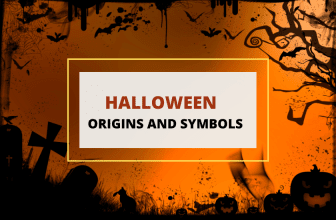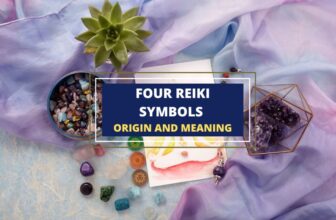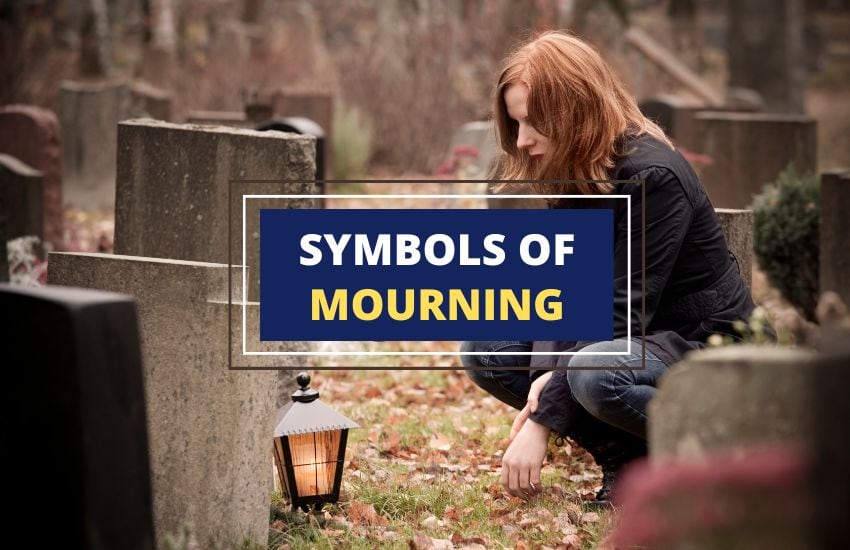
Table of Contents
When it comes to mourning, people often think of typical symbols like black clothing and somber music. But did you know there are some truly unique symbols of mourning out there?
From the traditional funeral processions of New Orleans to the colorful Dia de los Muertos celebrations in Mexico, mourning traditions are as diverse as the cultures that practice them.
And while some of these traditions may seem a bit bizarre or even downright strange, they all serve a purpose in helping people cope with loss. So, join us as we explore some of the most unique symbols of mourning from around the world, such as tear-catching jewelry, and even edible funeral potatoes.
Yes, you read that right – funeral potatoes. Let’s dive in and discover the fascinating world of mourning symbols together!
1. Black Clothes

Black clothes have long been a symbol of mourning in many cultures. But have you ever stopped to think about why that is?
The tradition of wearing black as a symbol of grief can be traced back to the Roman Empire, where mourners would wear dark togas to signify their sorrow. Over time, the practice spread throughout Europe and eventually to other parts of the world.
While black may seem like a somber and depressing color to some, it actually has a deeper symbolic meaning. In many cultures, black represents a sense of formality, respect, and dignity. By dressing in black, mourners show that they’re taking the loss seriously and that they honor the memory of the deceased.
But black clothes aren’t just for funerals anymore. In recent years, many brides choose to wear black wedding dresses. Today, it’s also a symbol of fashion.
2. Tombstones
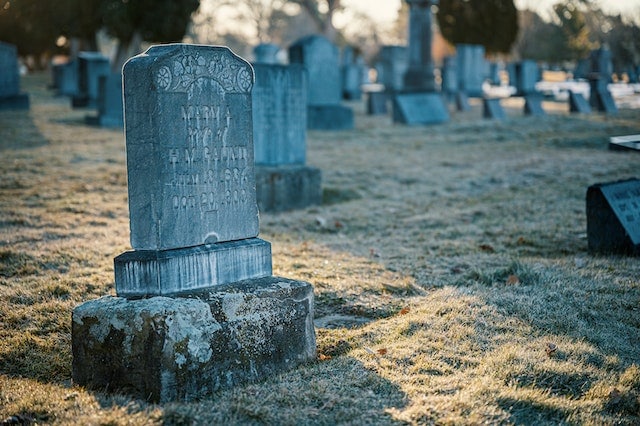
These permanent markers of our loved ones’ final resting places can evoke a wide range of emotions – from sadness and grief to nostalgia and even comfort.
The earliest forms of graves were simply mounds of dirt or rocks, with no permanent markers at all. It wasn’t until the 17th century that tombstones became popular, as people began to see them as a way to honor and remember the dead.
Today, tombstones come in all shapes, sizes, and materials. Some are simple and understated, while others are ornate and elaborate. Some even feature personalized engravings or photos, serving as a tribute to the individuality of the person buried beneath.
While tombstones may be a somber reminder of our mortality, they also serve as a tangible symbol of the love and connection we share with those we’ve lost.
3. Wreaths
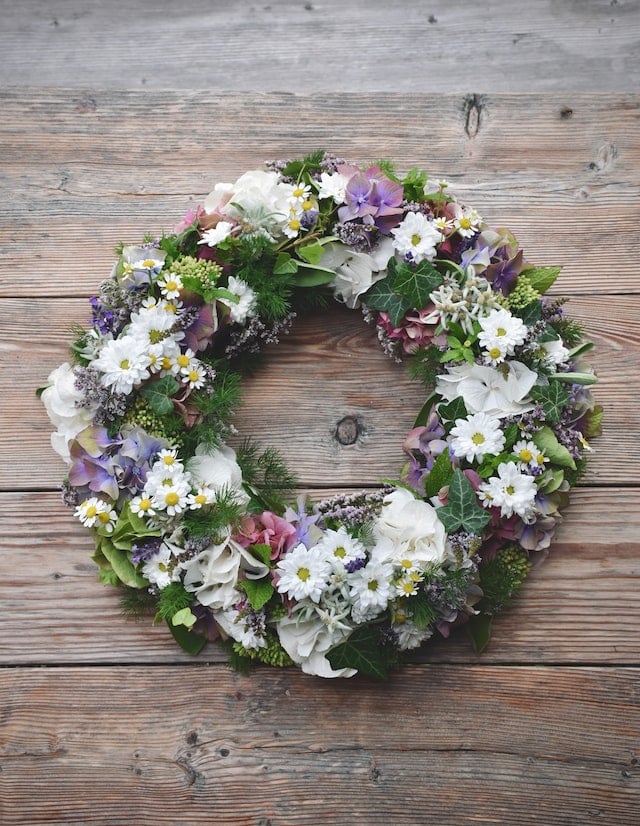
Traditionally made from flowers, wreaths serve as a beautiful and poignant tribute to those who have passed away. But what makes a wreath unique as a symbol of mourning is its circular shape, representing the eternal cycle of life and death.
The wreath serves as a reminder that even though someone may be gone, their memory and impact on the world will continue to live on.
Additionally, wreaths can also be personalized with specific flowers or colors that hold special significance for the deceased. For example, a wreath adorned with red roses may represent love and passion, while one made with white lilies may symbolize purity and innocence.
Whether it’s a small, simple wreath or a larger, more elaborate one, these beautiful creations serve as a touching reminder of the love and memories that will always remain with us, even after our loved ones have passed on.
4. Black Armbands

When someone experiences a loss, it’s natural to want to express their grief and show solidarity with others who are mourning. One way to do this is by wearing a black armband as a symbol of mourning.
The tradition of wearing black armbands dates back centuries and has been used to show respect and honor for the dead. The black color represents the darkness and sadness of death, while the armband itself is a visible sign of the wearer’s grief.
What makes the black armband unique as a symbol of mourning is that it’s a subtle yet powerful gesture. It’s a way to silently acknowledge the loss and express sympathy without drawing too much attention to oneself.
The practice of wearing black armbands is not limited to any specific culture or religion. It’s a universal symbol of mourning that transcends boundaries and brings people together in a shared experience of grief and loss.
5. Candles

Candles are a beautiful and powerful symbol of mourning that help us connect with our emotions and find comfort in shared experiences of grief and loss. Candles are often lit during funeral services or memorial ceremonies, and they can also be used in personal mourning rituals. Some people light a candle at home or in a special place to honor the memory of a loved one who has passed away.
One unique aspect of candles as a symbol of mourning is their ability to bring people together. The simple act of lighting a candle can be a unifying experience, as people come together to share their grief and support one another.
6. Tears
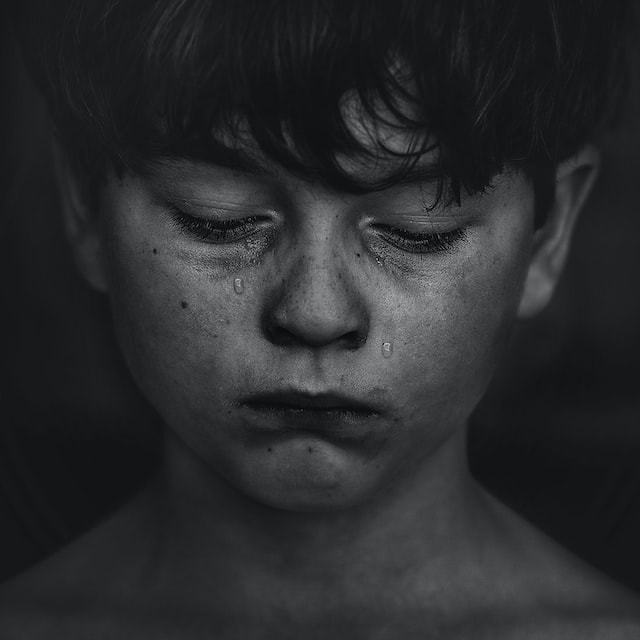
What makes tears unique as a symbol of mourning is that they’re deeply personal and individual. Everyone experiences grief differently, and the tears they shed are a unique expression of their emotions.
Tears can be a unifying experience, as they serve as a visible sign of the shared human experience of loss and grief. Seeing someone cry can be a powerful reminder of the depth of their pain and the importance of coming together to offer support and comfort.
Although tears are often seen as a sign of sadness, they can also be a symbol of hope and healing. Shedding tears can be a cathartic experience, allowing people to release their emotions and find peace in the midst of grief.
7. Funeral Processions

Funeral processions have been a traditional symbol of mourning for centuries, and they continue to hold great significance today. A funeral procession is a solemn and respectful way to escort the deceased to their final resting place and to honor their life and memory.
A funeral procession can also be personalized with specific customs or traditions that hold special significance for the deceased or their family. For example, a procession may include a specific type of music or a particular route that the deceased was fond of.
In addition, funeral processions also serve as a reminder of the importance of respecting and honoring the dead. They’re a visible sign of the deep respect and reverence that we hold for the deceased.
8. Funeral Urns

Funeral urns are unique and versatile symbols of mourning that have been used for centuries to honor and remember the dead.
These ornate containers serve as a final resting place for cremated remains. They are often personalized with engravings or other decorations that hold special meaning for the deceased or their family.
One of the most interesting aspects of funeral urns as symbols of mourning is the wide range of styles and materials that are available. From sleek and modern designs to ornate and traditional options, funeral urns can be customized to reflect the individuality of the person they’re honoring.
These urns can also serve as a tangible reminder of the deceased, allowing family members and loved ones to keep their memory close. Some people choose to display urns in their home, while others may choose to scatter the ashes in a special place that held meaning for the deceased.
9. Black Veils
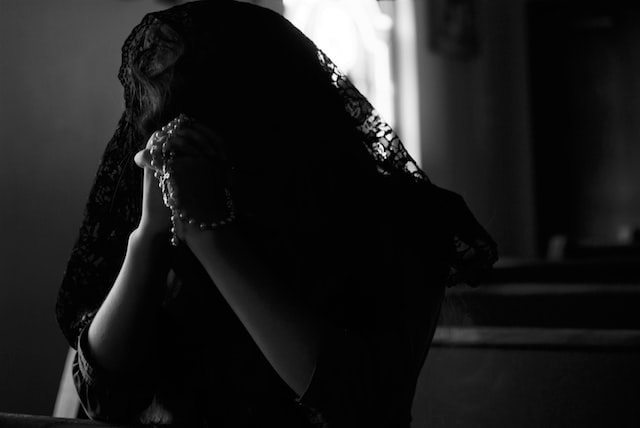
What’s unique about black veils as symbols of mourning is their ability to convey a sense of mystery and solemnity. The way the fabric drapes over the face can create a sense of mystery and separation from the world, emphasizing the deep emotions of the mourner.
Black veils can be a sign of solidarity among women who are grieving. Wearing a black veil was once a sign of respect for the dead, and it also served as a symbol of unity among the women who were mourning together.
In addition, black veils can be a beautiful and timeless way to honor the memory of the deceased. They serve as a reminder of the deep emotions and connections that we have with the people we love, even after they have left us.
10. Memorial Statues
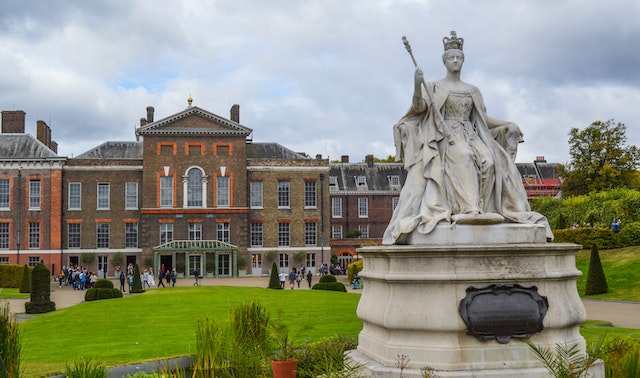
Memorial statues can take many forms, from classical depictions of angels or religious figures to more modern and abstract representations of grief and loss.
One interesting aspect of memorial statues as symbols of mourning is that they serve as a permanent reminder of the person who has passed away. A statue can serve as a place of pilgrimage for family members and loved ones, offering a way to connect with the memory of the deceased and to find solace in their absence.
Memorial statues can also serve as a way to celebrate the life and legacy of the person who has passed on. A statue can be personalized with specific details or features that hold special meaning for the deceased or their family, creating a lasting tribute to their unique spirit and personality.
11. Doves
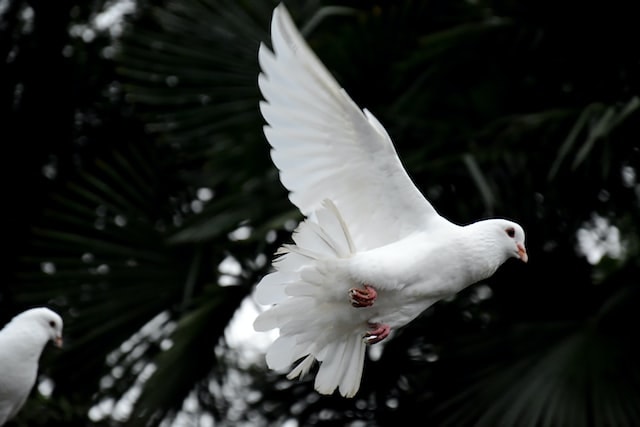
Doves may not be the first thing that comes to mind when thinking of symbols of mourning, but these beautiful birds have been used for centuries to represent peace, love, and the journey from life to death.
These birds have been used as symbols of mourning because of their reputation for being gentle and peaceful creatures. They’re often released at funerals and memorials as a way to symbolize the spirit of the deceased ascending to heaven in a peaceful and loving manner.
Doves can also represent the idea of renewal and new beginnings. Mourning is a difficult and painful process, but the release of doves can signify a new chapter and a fresh start for those who are left behind.
The simple act of releasing doves can also bring a sense of joy and hope to a difficult time. Seeing the birds take flight and soar into the sky can be a powerful reminder of the beauty and wonder of life, even in the midst of sorrow and loss.
12. Lilies
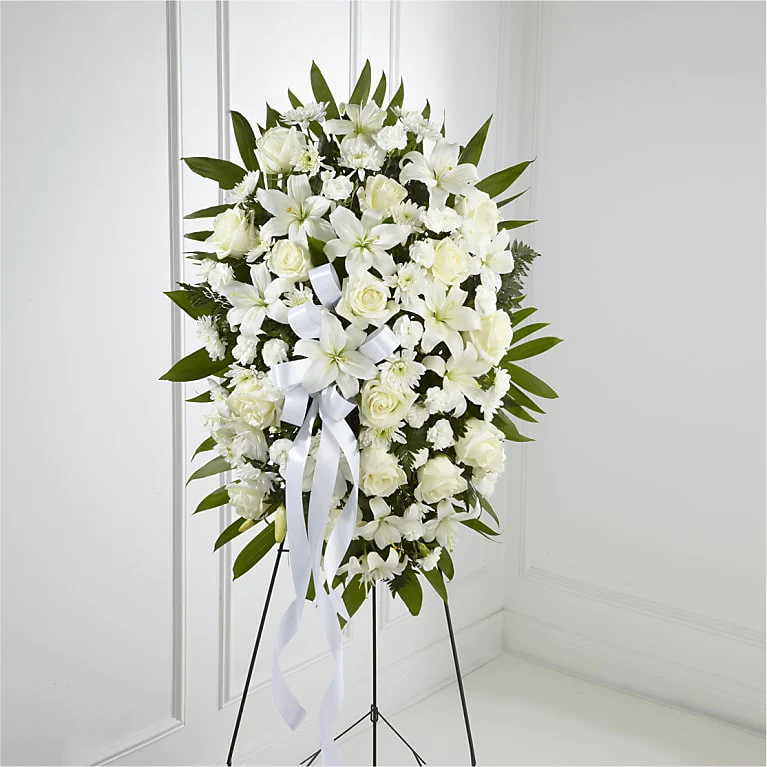
Beyond their traditional association with grief and loss, lilies also carry a deeper spiritual significance that can offer comfort and solace to those who are grieving. For example, lilies are often associated with the concept of rebirth and renewal.
The delicate beauty of the flower can symbolize the idea of new beginnings, offering hope and optimism in the face of loss.
Lilies have also been used in many cultures as a symbol of spirituality and transcendence. The fragility of the flower, combined with its graceful and elegant form, can represent the idea of the soul’s journey from life to death and beyond.
In some traditions, lilies are also associated with the idea of resurrection and eternal life. This can offer a powerful sense of comfort to those who are mourning, reminding them that even in death, the spirit of their loved one lives on.
13. Funeral Bells
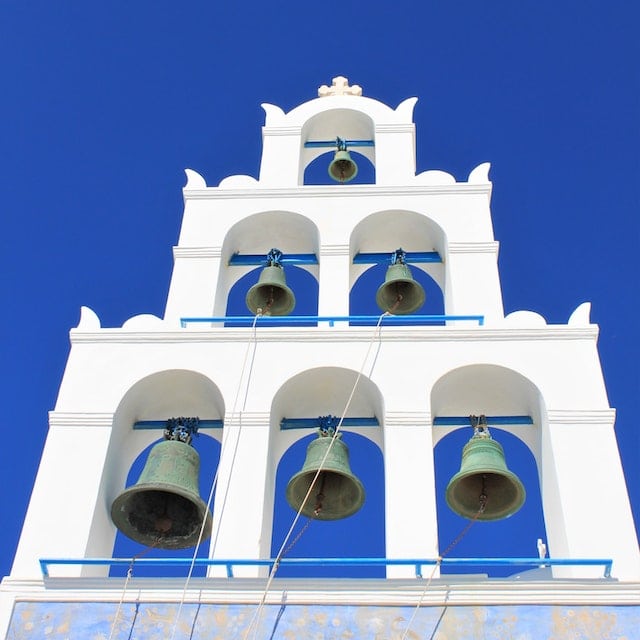
Funeral bells are a haunting and somber symbol of mourning that have been used for centuries to mark the passing of a loved one. The tolling of a bell can evoke a range of emotions, from sadness and grief to contemplation and reflection.
In many cultures, funeral bells are also associated with the idea of transition and passage. The tolling of the bell can represent the idea of the deceased moving from one world to another, or of the living letting go and moving forward in their own lives.
The bells can also be seen as a symbol of community and support. The sound of the bell can bring people together in shared grief and remembrance, providing a sense of comfort and connection in times of loss.
Some believe that the tolling of a funeral bell has spiritual significance, representing the idea of the soul’s journey into the afterlife.
14. Photographs
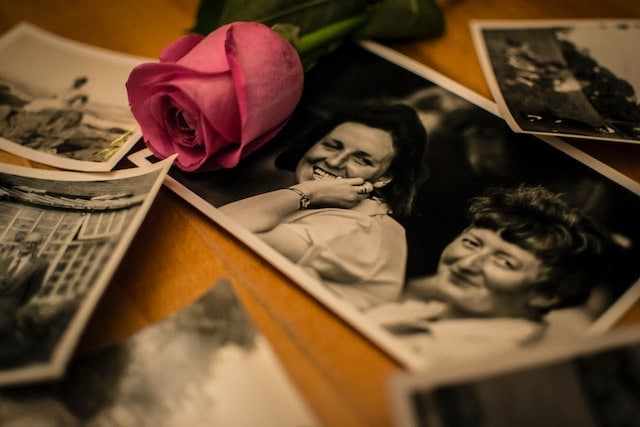
In many cases, photographs may be the only tangible connection we have to our loved ones, particularly if they have passed on before the advent of video recordings or other modern technologies.
Photographs can also serve as a powerful tool for remembrance, allowing us to reflect on the memories and experiences we shared with the person who has passed on. They can evoke a range of emotions, from joy and happiness to sadness and grief, and offer a way to connect with our feelings in a tangible and concrete way.
Photographs can also serve as a way to honor and celebrate the life of the deceased. They can be displayed at a funeral or memorial service, or used to create a photo album or other keepsake that can be cherished for years to come.
15. Funeral Potatoes

Funeral potatoes, also known as “potato casseroles,” might seem like an unusual symbol of mourning, but they’re actually a staple at many post-funeral gatherings. These hearty dishes, typically made with hash browns, cheese, cream, and other ingredients, are a comforting and easy way to feed a crowd during a difficult time.
While funeral potatoes may not have the same traditional significance as other symbols of mourning, they’ve become a familiar and beloved tradition in many communities. They offer a way for friends and family to come together and share a meal, offering both sustenance and comfort during a time of grief.
In some cases, funeral potatoes may even be prepared by loved ones as a way to honor the memory of the person who has passed away. They can be a reminder of happier times, when the person was still alive and enjoying the company of their family and friends.
16. Tear-Catching Jewelry

Tear-catching jewelry is a lesser-known symbol of mourning. These small, intricate pieces of jewelry are designed to catch the tears of the wearer, serving as a physical representation of the emotional pain and sadness they’re experiencing.
While the tradition of tear-catching jewelry may seem obscure, it offers a deeply personal way for mourners to express their grief. By capturing their tears, the jewelry creates a tangible connection between the mourner and their loved one, helping to ease the pain of separation and providing a sense of comfort.
The jewelry can take many forms, including necklaces, pendants, and earrings, with designs ranging from simple and understated to elaborate and ornate. Some pieces even feature small glass orbs or vials to hold the captured tears, making them a powerful and meaningful symbol of loss and remembrance.
Wrapping Up
Symbols of mourning come in all shapes and sizes. From black clothing to funeral bells, lilies, and doves, these symbols can offer a comforting reminder of the loved ones we have lost. Some symbols may seem unusual, such as funeral potatoes or even photographs, but they can hold a special meaning for those who use them to honor their loved ones.
Whether we’re honoring a loved one’s life with a solemn procession or gathering together to share stories and comfort food, these symbols of mourning remind us that we’re not alone in our grief.
And that’s probably the most powerful symbol of all – the enduring love and connection we share with those who have passed on.
Similar Articles:
15 Heart-Warming Symbols of Mother-Daughter Love
19 Symbols of Understanding and What They Mean






